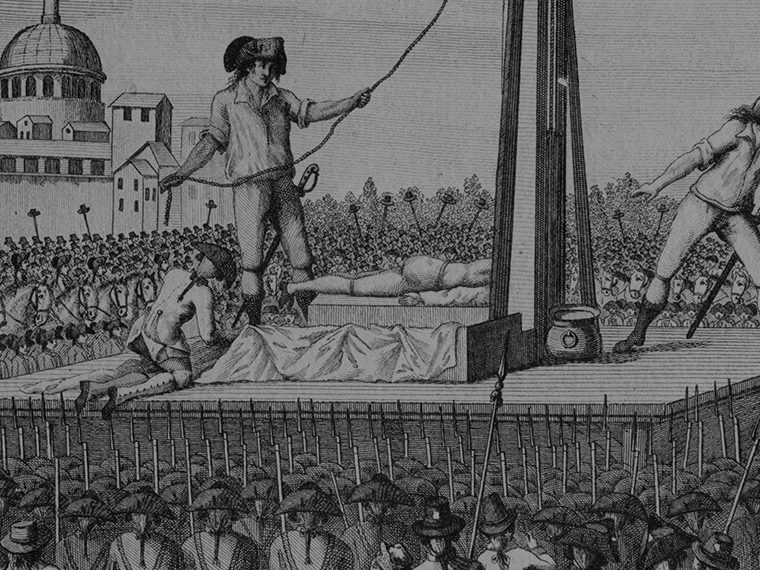Gauging Trump's appeal by estimating an area's social capital
Efforts to understand the rise of political populism in democratic societies often focus on traits of individuals: economic standing, religious affiliation, racial identity and education.
A National Bureau of Economic Research working paper by UCLA Anderson’s Paola Giuliano and Romain Wacziarg instead starts by looking at the social environment within which individuals reside, seeking to measure the presence of institutions that bind people together — what the authors call social capital.
The researchers chose to examine not left-leaning populism but right-wing movements. “The rise of Donald Trump reflects the success of a populist political agenda related to that of far-right movements in Europe, such as the Front National in France, the United Kingdom’s UKIP, the Alternative for Germany and the Sweden Democrats. What are the causes of the rise of populist movements in industrialized democracies?”
Opt In to the Review Monthly Email Update.
Having mapped that and adjusted it for population (the density of organizations built around religion, civic and social interests, business, politics, professions, labor, recreation and clubs), Giuliano and Wacziarg added in data on levels of trust and public involvement by individuals and by location. And then they examined these measures alongside voting data from the 2016 U.S. presidential election.
They find that lower levels of social capital — and of trust — went along with higher levels of support for Donald Trump, both in the Republican primaries of 2016 and in the general election.
“We hypothesize that a fraying social fabric, captured by a decline in the density of membership in civic and religious organizations, is partly responsible for the rise of populism,” the authors write.
Where social capital is more robust, the researchers found lower support for Trump in the election.
Giuliano and Wacziarg build on foundational work by Robert Putnam that established in modern Italy, group participation in social and political organizations is a key component of social capital, as it “instills in their members habits of economic cooperation, solidarity and public spiritedness.”
A 2006 study in the U.S. introduced a quantitative approach to measure the level of group connectedness using county-level U.S. Census data for a number of factors, including membership in different organizations. The number of organizations in a given county was converted to a “density” measurement adjusted for population. The same authors updated that approach with data from 2009 and 2014, and incorporated it with voter turnout data, Census participation data and the number of nonprofits in a county to create their Social Capital Index. Across U.S. counties, this index ranges from -3.6 to +8.1.
Two California examples: Kings County has a social capital index of -2.78, which is lower than the first percentile of the distribution of social capital across the US (1% of U.S. counties have lower levels of social capital). It’s one of the most reliably Republican counties in California. Alpine County has a social capital index of 2.39, which is around the 97th percentile of social capital in the U.S. (97% of U.S. counties have lower levels of social capital). It has voted reliably for the Democratic presidential candidate since 2004.
Focusing on local institutions, of course, removes online connectedness from the calculation of social capital. In an email exchange, Wacziarg said online activities may, for some, partly replace in-real-life associations; but, he said, “Surely online and offline social capital are not perfect substitutes. The depth and duration of online links are likely to be weaker than offline friendships and connections.” He added, “Online interactions are often antagonistic.”
Giuliano and Wacziarg also get at levels of trust by county, incorporating data from the General Social Survey, a sweeping ongoing research project conducted at the University of Chicago. Giuliano and Wacziarg focused on the responses to one particular question: Generally speaking, would you say that most people can be trusted, or that you can’t be too careful in dealing with people? The fraction of people who trust others is on average 37% across U.S. counties, ranging in principle from 0 to 1.
Based on their analysis of data for more than 2,400 counties, a 1-unit decrease in the index of social capital is associated with an increase of 1.48 percentage points in the Trump vote share in the primaries, and a 0.96 percentage point increase in his vote share in the 2016 general election.
Going from a zero share of people who trust others to a share of one is associated with a 3.8% decrease in Trump vote shares in the primaries, and an 8.5% decrease in the general election.
“Populist movements that seek to place the responsibility for social dysfunction on outsiders — immigrants and foreigners — seem to thrive in the very places that have experienced a disintegration of social ties in recent decades,” write Giuliano and Wacziarg.
Featured Faculty
-
Paola Giuliano
Professor of Economics; Justice Elwood Lui Endowed Term Chair in Management
-
Romain Wacziarg
Professor of Economics; Hans Hufschmid Chair in Management
About the Research
Giuliano, P., & Wacziarg, R. (2020). Who voted for Trump? Populism and social capital.




